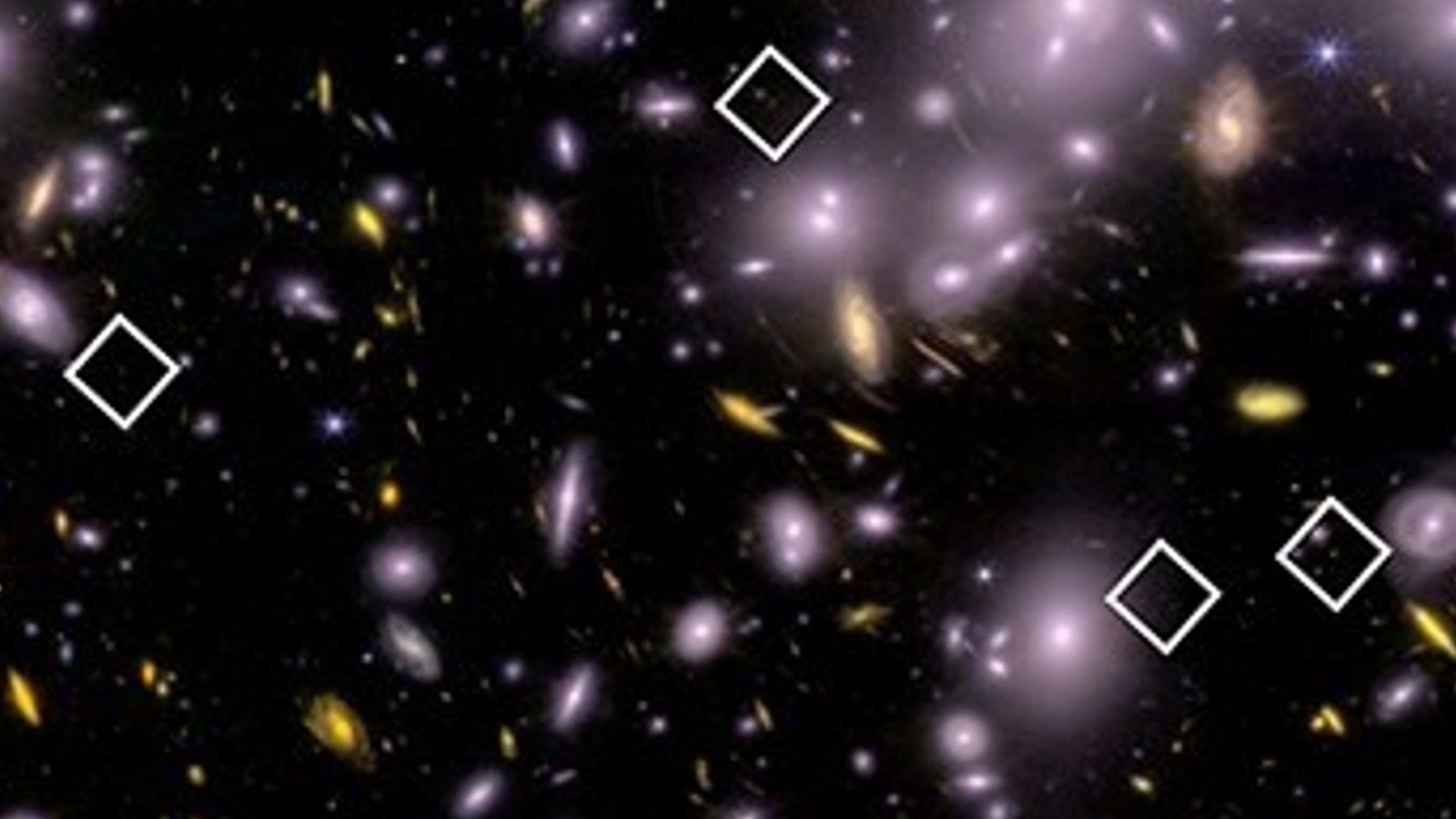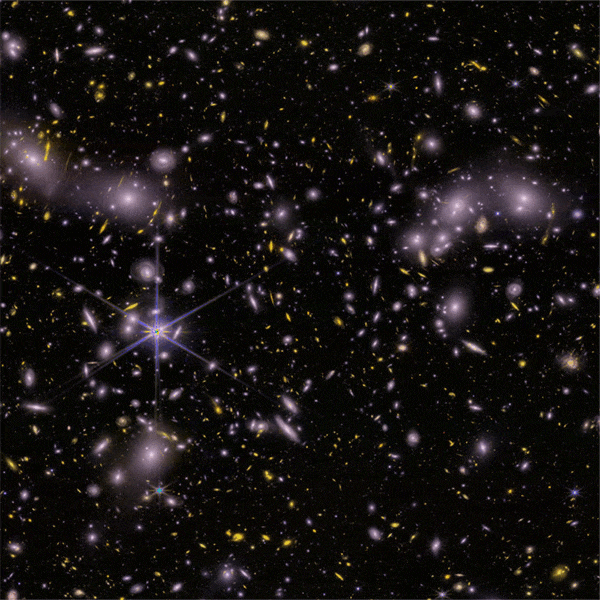Follow us on Google News (click on ☆)

White diamond-shaped symbols mark the locations of 20 out of the 83 newly discovered young, low-mass galaxies. Though small, these galaxies are powerful sources of ultraviolet radiation.
Credit: NASA/ESA/CSA/Bezanson et al. 2024 and Wold et al. 2025
The study focused on the galaxy cluster Abell 2744, also known as the Pandora Cluster. The extreme gravity of this cluster acts as a natural lens, magnifying light from distant galaxies located behind it. This technique allowed researchers to look back in time to just 800 million years after the Big Bang.
JWST's instruments, particularly the NIRCam camera and NIRSpec spectrograph, were essential in detecting the signature of doubly ionized oxygen. This signature is a clear indicator of intense star formation, confirming that these dwarf galaxies were major players in brightening the Universe.

An animation showing the identification of dwarf galaxies in the Pandora Cluster.
Credit: NASA
The results, published in Nature Astronomy, suggest that these galaxies, though small, were numerous and powerful enough to ionize the neutral hydrogen in the young Universe. This discovery challenges previous theories that attributed this role to more massive galaxies or quasars.
Today, similar galaxies, such as 'green peas,' are rare but known for their strong ultraviolet emissions. If primitive galaxies functioned similarly, they could have provided all the energy needed to make the Universe transparent to light.
How could dwarf galaxies influence the young Universe?
Dwarf galaxies, though small, were extremely numerous in the early Universe. Their sheer number combined with their intense star-forming activity allowed them to emit significant amounts of ultraviolet radiation.
This radiation was powerful enough to ionize the neutral hydrogen that filled the Universe at that time. This process, known as reionization, allowed light to travel freely through space, ending the "dark ages."
Observations from the James Webb Telescope confirmed that these small galaxies were capable of producing more ultraviolet radiation per unit mass than larger galaxies. This made them particularly effective in contributing to reionization.
This discovery opens new perspectives on understanding the evolution of the Universe and the role of different galaxy populations in this evolution.